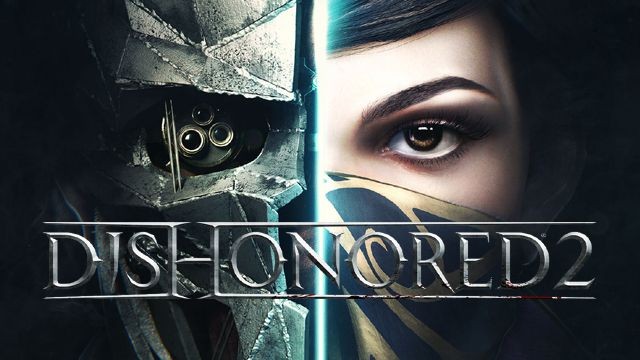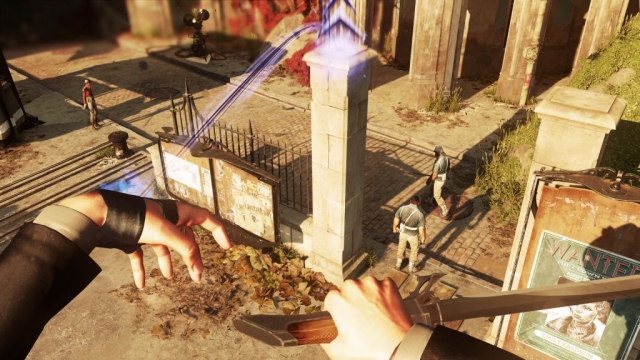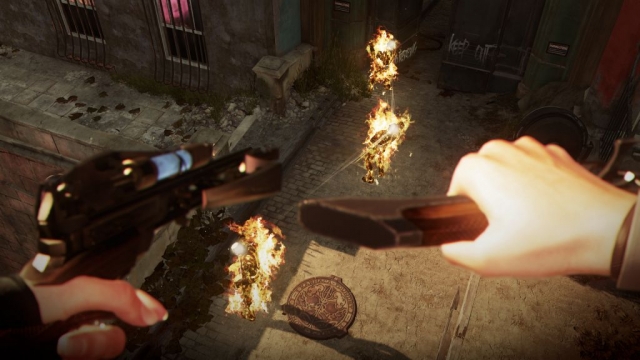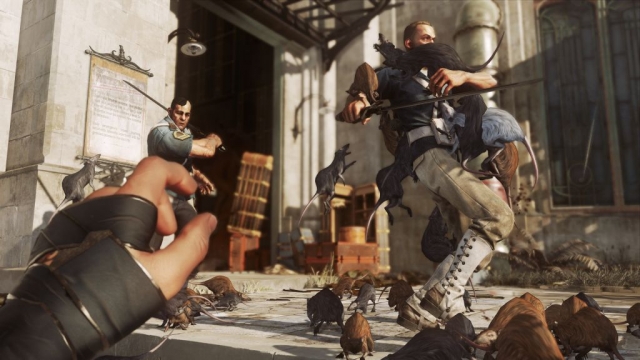Dishonored 2

This is one of those sequels that feels like a mission pack for the original. There’s a distinct feeling, as you go through Dishonored 2, that we’ve been here before, which even the characters themselves remark upon from time to time. That doesn’t make it a bad game, but it’s a slight sour note in what’s otherwise just as dense, manipulable, and customizable an experience as the original Dishonored.
Set fifteen years after the original game’s low-chaos ending (and drawing heavily upon the story found in the Knife of Dunwall and Brigmore Witches DLC), Emily Kaldwin has grown to adulthood and now rules as Empress, with her father Corvo Attano serving as her chief advisor and bodyguard. On the fifteenth anniversary of her mother’s assassination, which has been turned into an incredibly depressing national holiday for some reason, Emily is interrupted at court by the arrival of the Duke of Serkonis, her vassal who rules the distant city of Karnaca. The Duke is accompanied by a small army of sympathizers, a handful of dangerous clockwork soldiers, and the witch Delilah Copperspoon, who claims to be Emily’s aunt and thus the true heir to the throne.
You can play as either Emily or Corvo. The one you don’t pick gets turned to stone by Delilah, while the other is framed for murder and forced to escape the city. Two weeks later, you fetch up in Karnaca, intending to clear your name, find out more about the Duke and Delilah’s conspiracy, and eventually return to depose a weakened Delilah.
In effect, it plays out a lot like the original Dishonored did, where you pick apart your enemies one by one and piece by piece over the course of several missions. There are only nine levels in D2, but there’s a lot to find and explore in each one, and the game changes enough as you vary your approach that it adds a lot of replay value. Each map is covered with secret passages, hidden treasure, shortcuts, side rooms, and little mysteries, and the two characters are just different enough that it’s worth going through the game with both of them.
One thing I truly appreciate is that D2 vastly expands your non-lethal options. In the first game, if you were trying to stay on the non-lethal “good” route, it put most of your powers and equipment off-limits because they were all instantly lethal. D2 gives you a couple of different ways to knock somebody out, including “stun mines” that radiate electricity when set off, an incredibly painful-looking drop “assassination,” and being able to shoot people in the legs to set up a finisher. You can go direct and non-lethal like a steampunk Batman if you want, and it’s actually a lot of fun.
The short version here is that Dishonored 2 shares the strengths of the original, addresses many of its weaknesses, and adds enough new mechanics and features that it feels like a step forward. If you liked the first game, you’ll like this one; if you didn’t, this won’t change your mind.
I only have two real complaints about D2. One is that it feels a bit buggy as of this writing. I found a couple of different places in the game where I could fall entirely through the world; unconscious enemies can die to a passing breeze, which tanks my no-kill run through no fault of my own; and the enemies’ AI often has them walking in place or frozen in a single position, especially if they were chasing me and I managed to escape. That’s nothing that a patch or two can’t fix, however.
The other is that the trademark chaos system in Dishonored is showing its age. As with the original, D2 keeps track of how disruptive you’re being as you progress through Karnaca, and each body you leave in your wake gradually raises the level of chaos around you. At low chaos, the city is relatively peaceful, although Karnaca is still a corrupt hellhole at the best of times; at high chaos, the guard’s out in force, everyone’s on edge, your character’s dialogue becomes angrier and more cynical, and your allies treat you like a monster.
However, the only thing the game tracks, as far as chaos goes, is whether or not you’re killing people, regardless of the target or how you choose to dispose of them. It feels strange to have dozens of potential ways to approach a given target, but to be reduced to just two when it comes time to eliminate them; and that the theoretically non-lethal approach, which theoretically demonstrates your character’s wisdom and restraint, is often a fate that’s arguably far worse than death. It was weird in the original, and it’s still weird here.
It would be nice if the game had the capacity to differentiate between types of assassinations, so a quiet murder with no witnesses was less chaotic than a flashy, overt fight to the death. It’d also be nice if there were more options than “kill” or “don’t kill,” where you could capture, bribe, blackmail, or fast-talk a target; or if the game could track your impact on the world in some way that’s less binary than whether or not you’re going lethal. In a game that’s otherwise very concerned with shades of gray, the chaos system almost feels quaint, especially when selling people into slavery or beating an entire division of the city guard into a coma are “low” chaos options.
That aside, I feel pretty comfortable giving Dishonored 2 the same rating I gave the original. It’s very much more of the same, and it could stand to put some more thought into its karma system, but it’s a well-designed game in a unique world with a lot to see and do. It’s worth checking out.
Reviewed By: Thomas Wilde
Publisher: Bethesda Softworks
Rating: 95%
——————————————————————————–
This review is based on a retail copy of Dishonored 2 for the PlayStation 4 provided by Bethesda Softworks.
 Game Over Online
Game Over Online









